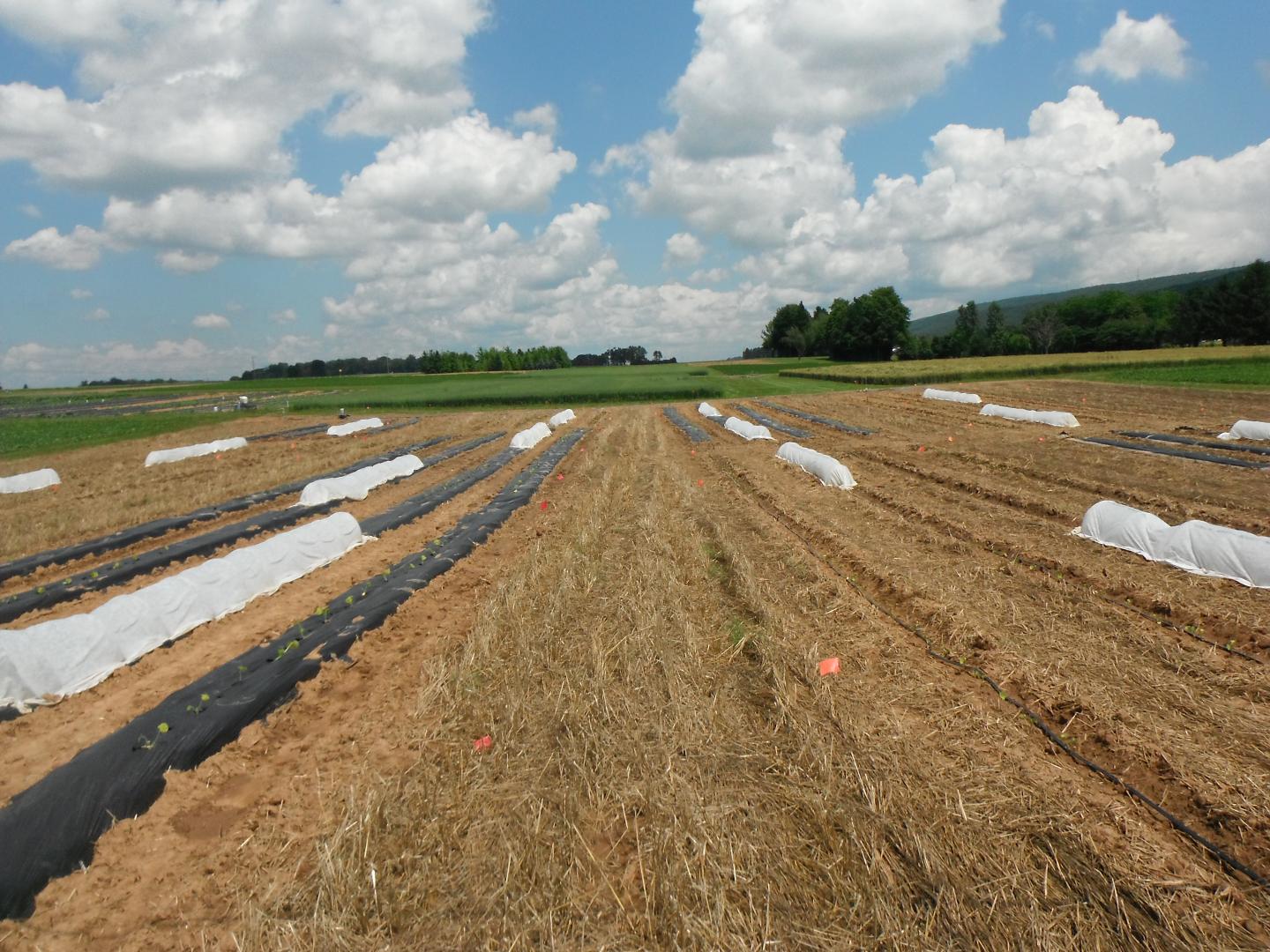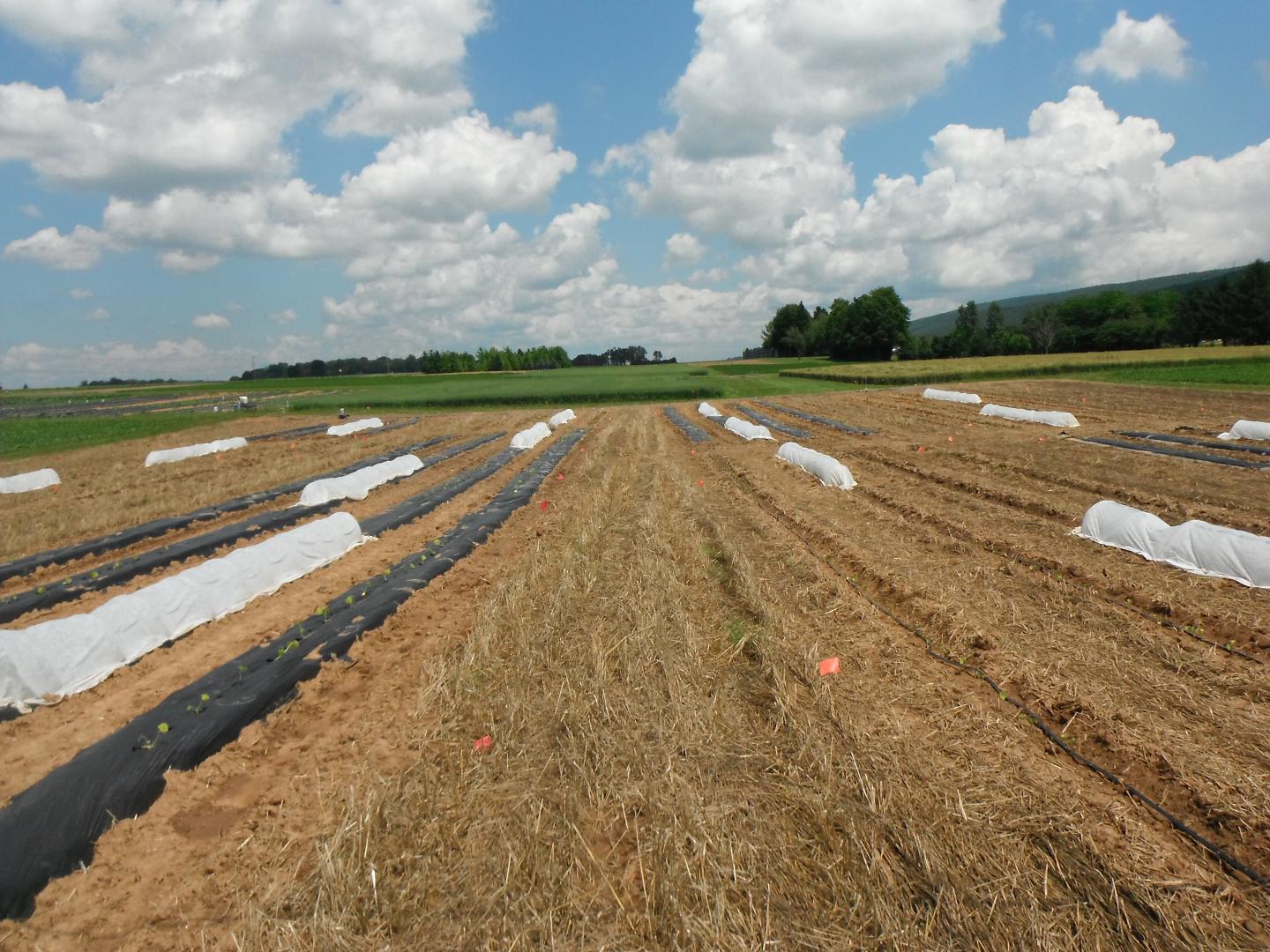
Credit: Photo courtesy of Jason Lilley.
UNIVERSITY PARK, PA – Plasticulture systems, the use of polyethylene mulch on raised beds with drip irrigation, are common in the production of many cucurbit crops in the Northeastern US. Plasticulture systems have numerous benefits, but concerns about costs and the environmental impacts of plastic disposal, along with expenses related to system installation, are motivating scientists to find alternatives. To determine the feasibility and effectiveness of alternative systems on cucurbit production, Pennsylvania State University researchers Jason Lilley and Elsa Sánchez, in collaboration with researchers from the University of Kentucky, Ohio State University, and Iowa State University, designed experiments to compare plasticulture and strip tillage systems with and without rowcovers in organically managed experiments.
Strip tillage systems, a form of conservation tillage in which cover crops or previous cash crop residue is left on the soil surface between rows while a narrow planting row is tilled, can reduce soil erosion, increase soil moisture retention and lead to increased soil microbial populations with less annual economic input than traditional systems. In an article in the October 2016 issue of HortTechnology, Lilley and Sánchez share the results of two experiments in which they compared strip tillage to plasticulture systems for organically managed cucurbit crops.
In one experiment with 'Lioness' summer squash, and another experiment with 'Athena' muskmelon, plants grown in the strip tillage system had lower yields than in the plasticulture system in both years. "Yield reductions observed in the strip tillage system in both years of the muskmelon experiment and in the first year of the summer squash experiment were beyond acceptable levels," said author Jason Lilley. "The need for specialized tillage equipment, delayed planting, and high weed pressure were all obstacles to the successful use of strip tillage in these experiments."
Rowcovers resulted in larger plants, but yields were comparable to not using rowcovers within the strip tillage and plasticulture systems. The use of rowcovers did allow for reduced insecticide applications. Observations revealed a low incidence of bacterial wilt in both years of the experiments despite the presence of striped cucumber beetle populations above the set threshold throughout all experiments.
"This research demonstrates the difficulties of using a strip tillage production system for organic cucurbit production," Lilley and Sánchez noted.
###
The complete study and abstract are available on the ASHS HortTechnology electronic journal web site: http://horttech.ashspublications.org/content/26/5/628.abstract
Founded in 1903, the American Society for Horticultural Science (ASHS) is the largest organization dedicated to advancing all facets of horticultural research, education, and application. More information at ashs.org
Media Contact
Michael W. Neff
[email protected]
703-836-4606
@ASHS_Hort
http://www.ashs.org
############
Story Source: Materials provided by Scienmag





